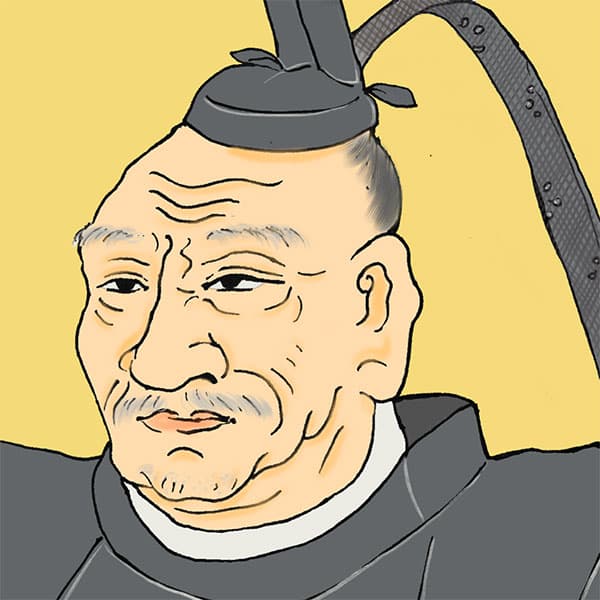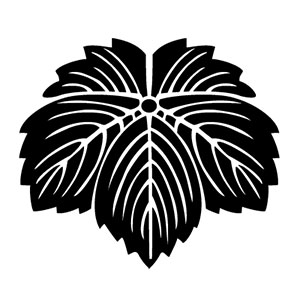- Tsu domainDomain administration by the Tomita and Todo clans
- The Tsu domain was ruled by two families, the Tomita clan and the Todo clan. The Tomita clan moved to another country in the early Edo period, and from then on the Todo clan ruled the Tsu domain for successive generations. Let's take a look at its history and the achievements of successive feudal lords. Builds the foundation of the Tsu domain

Tsu CastleTsu City, Mie Prefecture
- spring
- summer
- autumn
- winter
- TOP
- Kansai
- Mie Prefecture
- Tsu Castle
| Other name | Anotsu Castle |
|---|---|
| castle construction | 1558 |
| address | 33-5 Marunouchi, Tsu City, Mie Prefecture |
- Access to Tsujo
- 10 minutes walk from Kintetsu Tsushinmachi Station.
HISTORYAbout Tsujo
Tsu Castle is a castle located in the center of Tsu City, Mie Prefecture. The castle was built by Oda Nobunaga, the younger brother of Oda Nobunaga, and was extensively renovated in 1611 by Todo Takatora, who was known as a master castle builder. It continued to be the domain office of the Tsu domain until the Meiji era, when domains were abolished and prefectures were established. This time, let's take a look at the history of Tsu Castle and Tsu Domain.
- Tsujo during the Sengoku period
- The old name for Tsu was ``Anotsu,'' and it was the political and economic center of Ise Province since the Heian period. The Nagano Kudo clan, descendants of the Fujiwara clan, ruled this area from the Kamakura period. Tsu Castle began with a small castle called Anotsu Castle built during the Eiroku era (1558-1569) by a warlord named Hosono Fujimitsu, a member of the Nagano Kudo clan.
In 1568, Oda Nobunaga invaded Ise. At this time, the head of the Oda sweepstakes (Kazuyasu Tsuda) entered Anotsu Castle, and the following year, Oda Nobunaga, Oda Nobunaga's younger brother, entered the castle. Oda Nobukae begins rebuilding the castle. The castle was expanded, a moat was built, stone walls were built, and the Honmaru, Ninomaru, and Sannomaru were constructed. In 1577, the five-story castle tower and small castle tower were completed. There was a theory that Oda Nobunaga's younger sister, Oichi, lived in Tsu Castle with her three daughters and her mother after the Asano family was destroyed, but it is now the established theory that she lived in Moriyama Castle. It has become. - Battle of Anotsu Castle
- After Oda Nobunaga's death, Toyotomi Hideyoshi, who reached the top of the samurai ranks, moved Oda Nobukane from Tsu to Kashiwara, Tanba Province in 1594. In July 1595, a man named Ippaku Tomita, a vassal of the Toyotomi family, entered Tsu Castle, which had lost its owner, and was given 60,000 koku. When the Battle of Sekigahara occurred in 1600, Ippaku Tomita's son, Nobutaka Tomita, joined the Eastern Army. As a result, Tsu Castle was surrounded by 30,000 troops of Mori Hidemoto and Chosokabe Morichika who were with the western army. Nobutaka Tomita's army numbered only 1,300 people, and most of the buildings in Tsu Castle were burned down. Tomita Nobutaka then surrendered Tsu Castle through the mediation of Mokuzoku Oki, but after the establishment of the Edo Shogunate, this battle was appreciated and he was given an additional 20,000 koku.
- Renovation of Takatora Todo
- In 1608, Nobutaka Tomita transferred to the Iyo-Uwajima domain. The person who entered the Tsu domain in his place was Todo Takatora, who had moved from the Iyo Imabari domain to another country. The total koku of Ise and Iga was 220,000 koku. Todo Takatora was a master castle builder, and after entering the castle he transformed Tsu Castle into a contour-style castle and developed a castle town. The ruins that still remain in Ojo Park as the Tsu Castle Ruins were built by Todo Takatora. After that, Todo Takatora achieved great success in the Osaka camp, and in 1615 and 1617 he received an increase of 50,000 koku each, reaching 323,000 koku. .
- Tsujo in the Edo period
- Tsu Castle, which was rebuilt by Takatora Todo, later served as the residence of the Todo family throughout the Edo period and became the domain office of the Tsu clan. It was thought that Tsu Castle's castle tower had disappeared since the Battle of Sekigahara, but recent research has shown that a triple castle tower and double small castle tower are included in illustrations drawn during the Kanei era (1624-1643). I found out that it depicts Tsu Castle, which is located there. This castle tower is thought to have been rebuilt by Mr. Tomita, not by Takatora Todo. This castle tower was destroyed in a fire in 1662, but was never rebuilt.
- Tsujo after the Meiji era
- In 1871, the castle was abandoned due to the abolition of feudal domains and establishment of prefectures. The buildings will be demolished one by one, and the castle ruins will be turned into a ``Castle Park'' and a Japanese garden will be developed. In 1958, Ushitora Yagura was restored, but it is completely different from the one that existed in the Edo period. However, you can imagine what Tsu Castle looked like in the past. Additionally, the Shirikuri-no-mon gate that currently stands at the entrance to the Japanese garden at the site of the main enclosure is a relocated version of the Nyutoku-mon gate, which was the main gate of the domain school building.
Read biographies of people related to Tsujo
- Takatora TodoA master of castle construction who served many lords.
- Todo Takatora was born in 1556 in Todo Village, Inukami Gun, Omi Province (Shiga Prefecture) as the second son of Todo Takatora. His childhood name is Yokichi. His father, Torataka, was born as the second son of Noritsuna Mitsui, the lord of Omi Nazue Castle, but when he was young,

History of the Tsu domain, with Tsu Castle as the domain office
| Domain office | Tsu Castle |
|---|---|
| old area | Anotsu, Iseano District |
| stone height | 323,000 koku |
| Fudai/Tozama | Foreigner |
| main lord | Mr. Todo |
| Estimated population | 260,000 people (first year of the Meiji era) |
The founder of the domain was Todo Takatora, who was known as a master of castle construction. Although it was a foreign style, the domain style of ``hosho'' continued until the end of the Edo period, and it participated in the battles of Toba and Fushimi as part of the former shogunate army. However, the local commander, Motoshi Todo, responded to the imperial envoy's persuasion and switched to the new government's army.










